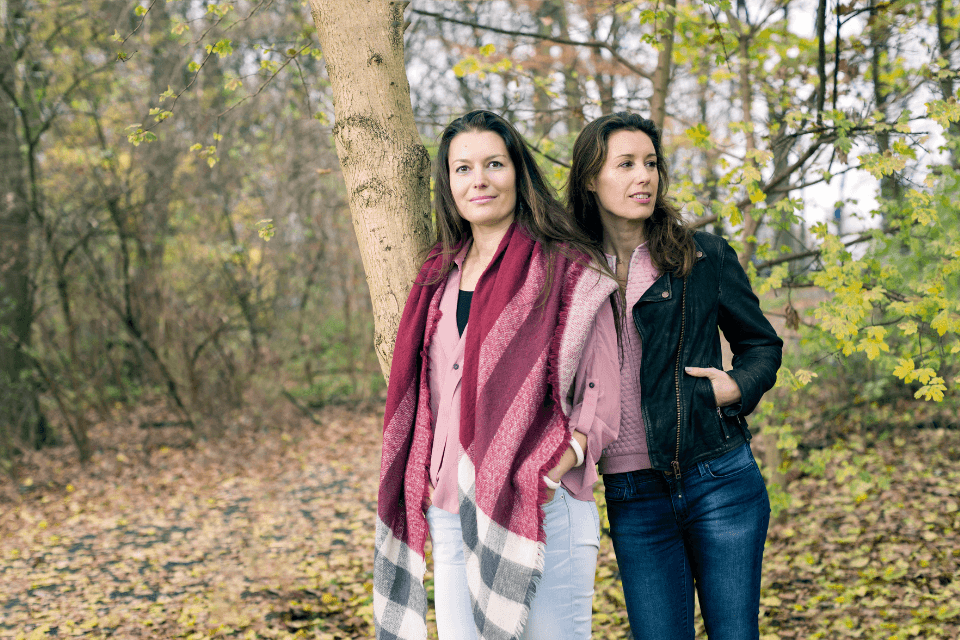Conferences
'The brain needs movement to stay active and sharp'

Organise a conference or symposium in a green space or the dunes, and then take a nature walk. The combination of exercise and being outside stimulates the brain. The result is that participants will remember the content or message of the conference better.
Walking in a green environment with the wind in your hair has a healing effect for the clients of Irina Poleacov and Christel Westgeest. These two mental health psychologists have been working with their company, De Buitenpsychologen (‘The Outdoor Psychologists’), since 2017 with the message that we need to go outside a lot more often.
Poleacov walks through the Goois Nature Reserve, and Westgeest walks through the dunes and on the beach. “Don’t forget the city parks. Cities also have a lot of greenery,” emphasises Westgeest, strolling through Deventer.
“Too many therapists do their work sitting down, advising their clients with anxiety or depression to move more and go outside. We just do it. The benefit is that walking is entrenched in our clients, and they often continue walking after therapy.”
A question of activation
Dutch newspaper Trouw described the pair as ‘forerunners of a new green movement within mental healthcare’. “The added value of walking in the rain or snow as part of the treatment plan is that activation takes place. Both mind and body are ‘on’. It’s body-orientated work at the same time,” explains Poleacov, about the benefit of being outside in nature. “People can think about it and understand it, but they also need to experience it physically, which sticks much better, and that happens much faster outside.”
Moving makes us more creative
How did we end up spending too much time indoors and then sitting for hours at a time? Like Poleacov and Westgeest, even well-known neuroscientist Erik Scherder does not have an answer for this. “Halfway through his lecture, Scherder stops and makes the students stand up so they can move and perform exercises. The brain is then ready to absorb information once more,” Westgeest says happily.
“Moving makes you more creative, and if you do that in a green space, it provides you with a second benefit. Science has proven that being outside is better for body and mind.”
A green location
The two are regularly asked to speak at conferences, seminars and special meetings because of their approach to incorporating nature in their work. They are familiar with the sector because they also provide training.
“We always go outside and into nature. It must be in a natural setting because the location is important. We let those who invite us know. In addition, we have made it our mission to show the conference world the importance of green spaces and the outdoors to shake things up in this field,” says Westgeest.
It requires 'rethinking' from people who organise conferences
It requires rethinking
The pair sees that it is already happening on a modest scale. It requires ‘rethinking’ from people who organise conferences, meetings and symposia.
“All this time we’ve been thinking about how to do it as comfortably and efficiently as possible indoors. We haven’t thought about how to do it as comfortably and efficiently as possible outdoors,” Poleacov continues. “It requires organisation and an awareness from event organisers. Why are greenery and the outdoors so important? Activation! Most people have a limited attention span. Neurologically, it’s not feasible to sit and listen all day. You get much less feedback from what you’re trying to convey.
The brain needs movement to stay active and sharp. By going outside in nature, the senses are much more activated. Presentation messages stick for longer when people see, smell and hold on to them. When it’s experienced collectively, it turns into an experience, which is far more memorable.”
Seasonal differences
It’s odd that many congresses and symposia are held at fixed periods at the beginning and at the end of the year. Why not in the summer? Make use of the four seasons just like the beach and the forest, Poleacov and Westgeest say.
“In the spring, we plan our spring-related deepening and training days. There’s a lot of energy then: showing yourself, occupying space,” Poleacov explains. “In the fall, we plan training days about mourning, loss, turning inward, and silence, which are much more in line with what people experience then: leaves falling.”
Forest or beach
Beach pavilion Noord in Bergen aan Zee has a different vibe than Radio Kootwijk in the Veluwe. Both the season and the location are important.
“A view of the sea is about space, vastness, and dipping your feet in the water. Forests are much more enclosed, as trees affect people differently than water,” Poleacov adds.
“For our trainings, we use a castle in Harmelen or an old monastery in Werkhoven. These locations provide very different experiences. The castle is more enclosed, while the monastery garden evokes something different.
The advantage of being at the beach in the summer is that you can take a refreshing dip after a walk on the beach. By holding trainings outdoors in the summer, participants will get enough outdoor time. After the summer, they will be indoors again for at least six months,” adds Westgeest.
Deel dit bericht
Reacties
Er zijn nog geen reacties.
Plaats een reactie
Je moet ingelogd zijn om een reactie te plaatsen.
